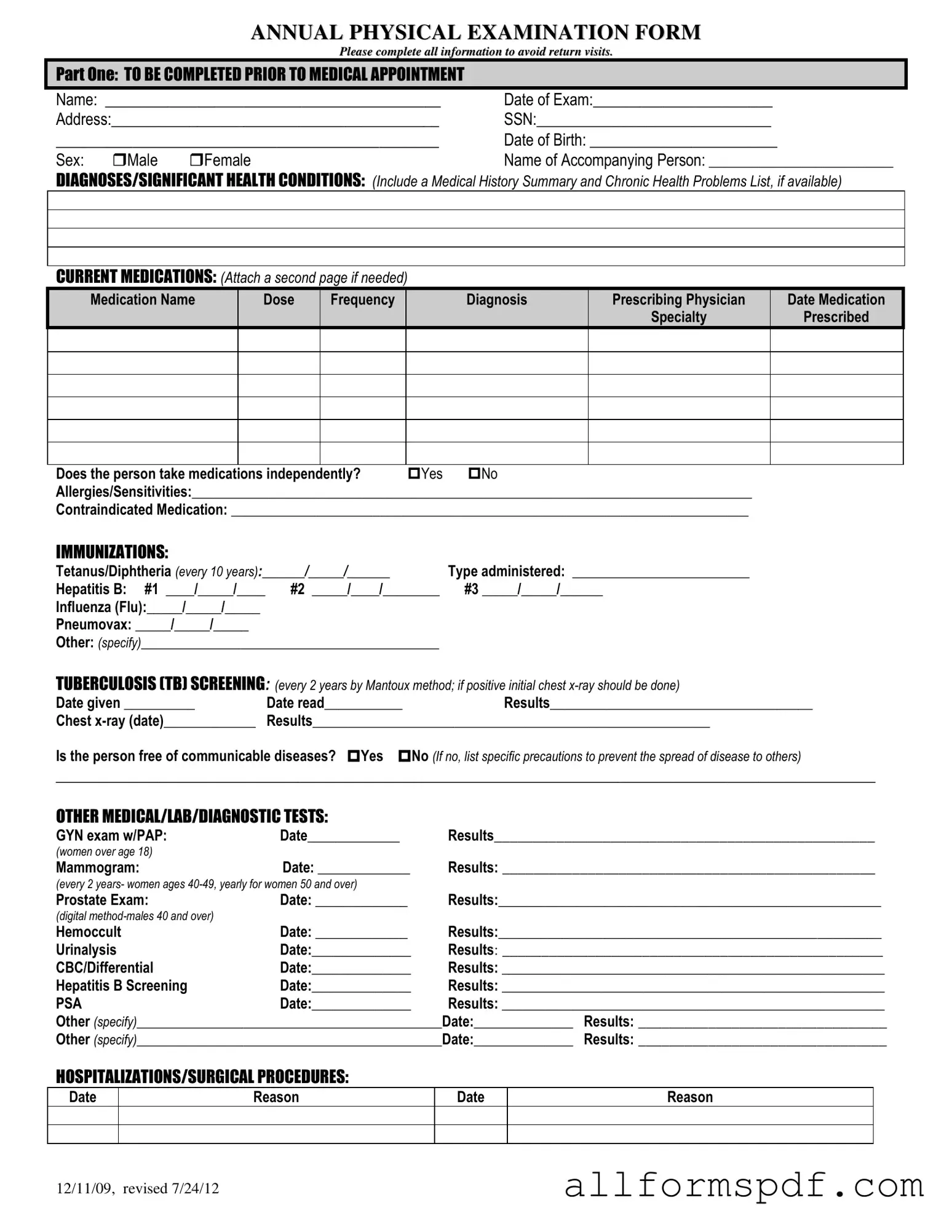Fill Out Your Annual Physical Examination Form
The Annual Physical Examination form is a comprehensive document designed to gather essential health information prior to a medical appointment. It includes sections for personal details, medical history, current medications, and various health screenings. Completing this form accurately is crucial to ensure efficient and effective medical care.
Create My Annual Physical Examination Now
